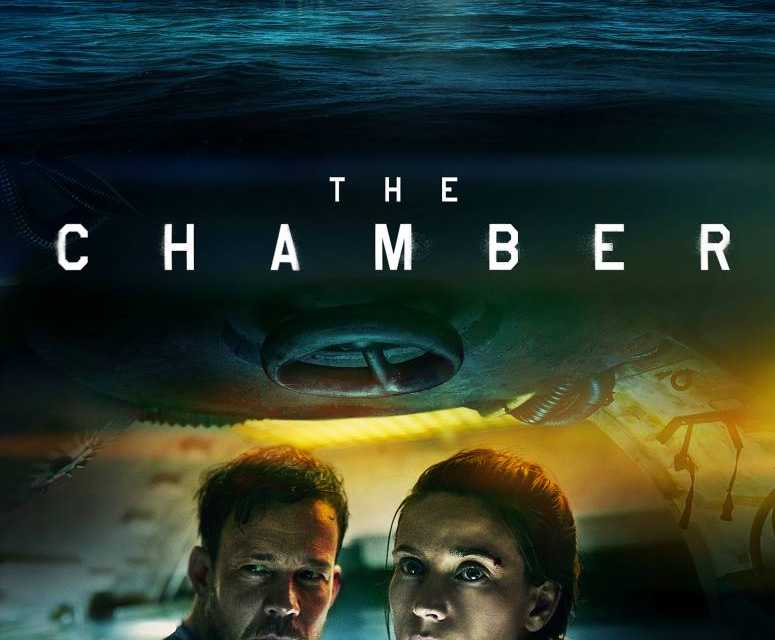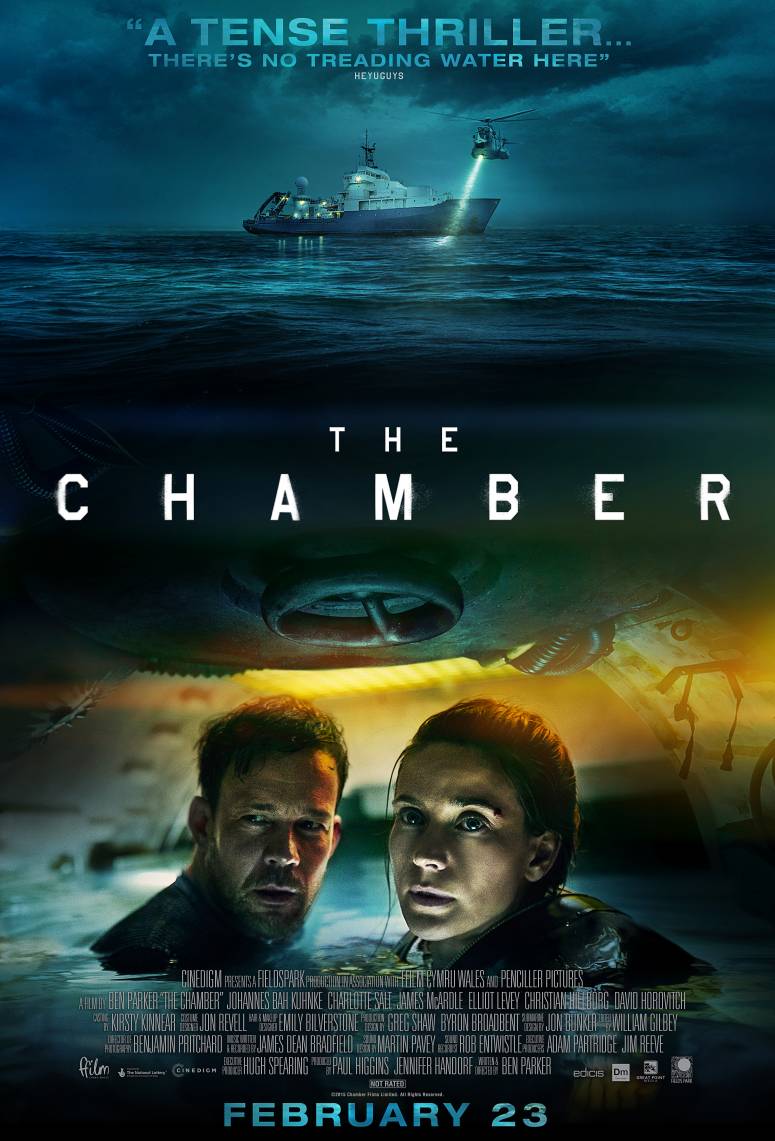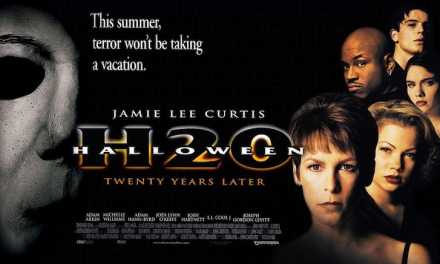
Review: “The Chamber” Submerges in Terror and Despair


Deep-sea thrillers are very difficult. Not only is it tough to create a compelling story in one or two locations, but creating a seamless, claustrophobic presentation has many challenges. Ben Parker, the director of “The Chamber,” may not have been able to pull the best out of his actors, but his filmmaking molded the film into an exciting experience. And by the end of it, “The Chamber” will satisfy as a heart-pounding, claustrophobic thriller. Yet, it’ll leave audiences praying to never be trapped 400 meters below sea level.
CINEMATICS (CINEMATOGRAPHY, ACTING, PLOT, ETC.) – 3.5

Four Characters. Four Talented Actors.
The movie revolves around four characters, which are all portrayed by some very talented actors. After a secret mission to retrieve data from a sunken American UAV off the coast of North Korea goes awry, the characters find themselves trapped inside their submersible craft 400 meters below sea level. So, these characters, three are American agents and the other is the Swedish pilot of the vessel, must band together to survive. And the situation, of course, creates fissures between the characters, until they are at each other’s throats and quickly losing grasp on any chance of survival.
The plot draws the audience in from the moment they head out on their “secret” mission. The most relatable character is Mats, the Swedish pilot, who, like the audience, has no idea what these three Americans want to do with his submersible vessel. So we immediately connect with him and root for him to survive because… he is the manifestation of the audience. However, his character, or the presentation of the character, has problems. The actor that portrays him is Johannes Kuhnke, who has some absolutely brilliant acting moments, especially during the final scenes. Despite that, there are several times where there’s too much distortion from his character. And it’s not because the character isn’t written right. It’s because Kuhnke’s performance falters and doesn’t feel genuine at certain times. It’s as if the director was pressed for time and did not make sure Kuhnke had a seamless performance.
All of Mats’ subtle alterations, awkward line delivery and insincere enunciations throws off the immersion at first. But it didn’t stay there for long. After the Americans set off a bomb that throws the submersible vessel upside down and traps it at the bottom of the ocean, Parker’s filmmaking abilities and artistic choices keep the blood pumping and the questions churning through every failure and claustrophobic angle.
ENTERTAINMENT VALUE – 3.5
The characters fail in “The Chamber.” They fail a lot. In screenwriting, if your characters fail and do not progress, the story is not interesting. Progression must be evident and hold an audience to a satisfying end. Or else the story is pointless.
“The Chamber” took that statement, balled it up and threw it in the trash. Yes, there are a lot of failures, a lot of questions and a lot of change of direction that eventually leads back to the same place, but that’s the point. In a story that, basically, takes place in one location, rationality and common sense must be evident. It’s the only way the story can progress and, simultaneously, create peril. If the characters are saved by some deus-ex-machina moment of progression, then the peril, terror, claustrophobia and immersion is lost quicker than a snap of the fingers. These characters are in one of the most helpless and terrifying experiences a person can be in. Therefore, actions and questions must receive the honest answers we, and the characters, do not want to see nor hear. It’s a brilliant way to create tension and tell a story and was the most entertaining part of the movie.
It remained entertaining… until the very end.

Rationality helps the film but also ruins it in a way…
After the explosion, every idea and attempt to fix something is shot down with logic. Every time a character tries to reroute the power or use momentum to rock the vessel right side up or call for help, rationality takes over and sets them back on the imminent path. A path leading to the only way out of the situation. A way out that surely means death for the four characters. As an audience member, it’s compelling to watch characters fail while the “only way out” looms above them. It helps the audience root for the characters to stop squabbling, band together and figure something else out. Because if they don’t, they’ll surely die. But all the rooting is for nothing because there’s an anti-climactic disappointment that finishes off the story.
The disappointment is a product of the rationality prancing around the entire story. What happens makes absolute sense and would, probably, happen in real life if one of us opened the hatch of a submersible vessel 400 meters below sea level. But as an ending for a movie, one, which sent the audience on a rollercoaster full of questions and despair, an ending that satisfied the hopes and dreams of the audience would’ve made this film rewatchable.
REWATCHABILITY – 1.5
It’s a good deep-sea thriller, but there’s not much temptation to rewatch it.
- Cinematics
- Entertainment Value
- Rewatchability
Summary
Deep-sea thrillers are very difficult. Not only is it tough to create a compelling story in one or two locations, but creating a seamless, claustrophobic presentation has many challenges. Ben Parker, the director of “The Chamber,” may not have been able to pull the best out of his actors, but his filmmaking molded the film into an exciting experience. And by the end of it, "The Chamber" will satisfy as a heart-pounding, claustrophobic thriller. Yet, it'll leave audiences praying to never be trapped 400 meters below sea level.
3












































